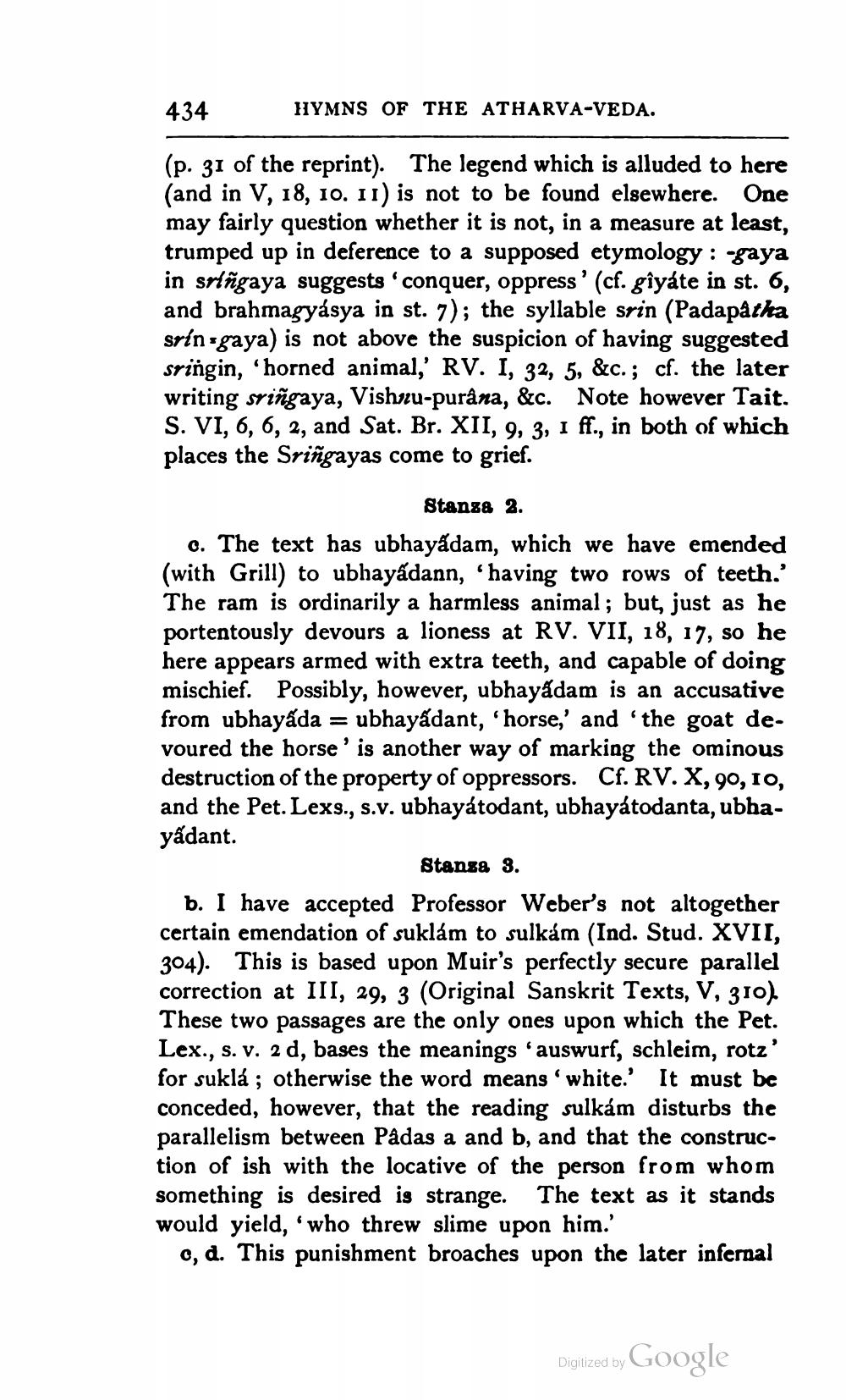________________
434
HIYMNS OF THE ATHARVA-VEDA.
(p. 31 of the reprint). The legend which is alluded to here (and in V, 18, 10. II) is not to be found elsewhere. One may fairly question whether it is not, in a measure at least, trumped up in deference to a supposed etymology: -gaya in srlñgaya suggests 'conquer, oppress' (cf. giyáte in st. 6, and brahmagyásya in st. 7); the syllable srin (Padapatha srin-gaya) is not above the suspicion of having suggested sringin, ‘horned animal, RV. I, 32, 5, &c.; cf. the later writing sriñgaya, Vishnu-purana, &c. Note however Tait. S. VI, 6, 6, 2, and Sat. Br. XII, 9, 3, 1 ff., in both of which places the Sriñgayas come to grief.
Stang& 2. c. The text has ubhayādam, which we have emended (with Grill) to ubhayádann, 'having two rows of teeth.' The ram is ordinarily a harmless animal; but, just as he portentously devours a lioness at RV. VII, 18, 17, so he here appears armed with extra teeth, and capable of doing mischief. Possibly, however, ubhayādam is an accusative from ubhayáda = ubhayảdant, 'horse,' and 'the goat devoured the horse' is another way of marking the ominous destruction of the property of oppressors. Cf. RV. X, 90, 10, and the Pet. Lexs., s.v. ubhayatodant, ubhayatodanta, ubhayadant.
Stansa 3. b. I have accepted Professor Weber's not altogether certain emendation of suklám to sulkám (Ind. Stud. XVII, 304). This is based upon Muir's perfectly secure parallel correction at III, 29, 3 (Original Sanskrit Texts, V, 310) These two passages are the only ones upon which the Pet. Lex., S. V. 2 d, bases the meanings 'auswurf, schleim, rotz' for suklá; otherwise the word means 'white.' It must be conceded, however, that the reading sulkám disturbs the parallelism between Padas a and b, and that the construction of ish with the locative of the person from whom something is desired is strange. The text as it stands would yield, 'who threw slime upon him.'
0, d. This punishment broaches upon the later infernal
Digitized by Google




